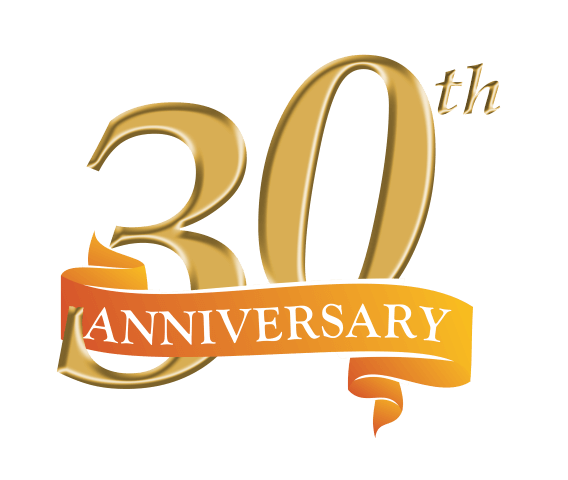Ideally, your regular dental cleaning ends with effusive praise over how well you’ve been maintaining your teeth. But sometimes, you need to have some repairs done, and a handful of scenarios might even call for a tooth extraction—a minor procedure performed by an oral surgeon, dentist, or periodontist.1
Whether you have an extraction scheduled to remove your wisdom teeth or one of your teeth cannot be saved, it’s essential to note that proper aftercare is imperative to your healing.
If you’ve been on the hunt to learn how to baby your mouth in the days following an extraction and ensure a full recovery, you’re in precisely the right place. Read on to learn all about tooth extraction aftercare so your smile can return in no time.
What Is a Tooth Extraction—and Why Is It Necessary?
While your dentist may attempt to help you retain your natural teeth through fillings, root canals, or dental crowns, sometimes teeth are beyond the point of repair and may cause significant, even debilitating pain and damage to your health if left intact.2
If so, a dental extraction—the removal of one or more of your teeth from their socket—is likely the best course of action. Extractions are one of the oldest and most fine-tuned forms of dental care. So despite any stress, you might experience before the procedure, know that you’ll likely feel incredible relief once the tooth has been removed (and the wound has healed).
Colloquially called “pulling a tooth,” tooth extractions may be crucial for a slew of reasons, namely:1
- Severe tooth decay or gum disease
- A fractured or impacted tooth
- Wisdom teeth removal
- Crowded teeth
- Tooth luxation, a condition in which your tooth’s “support system,” such as your tissues and bone, has been injured from trauma
Keep in mind that there are several ways to restore your smile—a topic we’ll delve into below.
How Is a Tooth Extraction Performed?
An extraction typically starts off with numbing the area around the damaged tooth to reduce or eliminate the possibility of pain. Generally, dentists will use local anesthesia. In some cases, however, such as for individuals who suffer from dental anxiety or for lengthy procedures, your dentist may suggest sedation.
Either way, once you’re settled in, your dentist will use specialized equipment to loosen your tooth and gently pull it out of its socket. If the tooth is easily accessible, this type of procedure is known as a “simple extraction.”
However, depending on the tooth’s placement and reason for its removal, you might require a “surgical extraction.” This involves the oral surgeon or dentist making small incisions in your gums to loosen the tooth and aid its removal.
What Happens After an Extraction?
After your tooth has been removed, the open socket will be thoroughly cleansed and disinfected. Your dentist may also apply stitches to accelerate the healing process.
While still in the chair, your dentist will place gauze on top of the socket, to which you’ll add pressure (by biting down). This is performed to stop the bleeding and to promote the formation of a blood clot. Protecting this blood clot over the following week is one of the keys to ensuring your tooth extraction recovery goes well.
Tooth Extraction Aftercare: 5 Leading Tips
While your dentist may perform this minor procedure, how you care for the open wound in your mouth is of tremendous importance. Every dentist may have different guidelines, but the following tips and instructions are widely recommended and employed.
#1. Fill Your Prescription Before Your Tooth Extraction
Unless your dentist has chosen to hold off on writing a script until after the extraction, arrange to have your medications at the ready and take them as prescribed.
#2. Commit To Keeping The Area Clean
It may go without saying that a tooth extraction will leave you with an open wound—and one that will be vulnerable to bacteria. To keep the wound site clean:
- Use an antibacterial mouthwash, preferably one that has been recommended by your dentist.
- Be sure to rinse gently, as even your normal rinsing vigor may dislodge the blood clot. Similarly, refrain from spitting and gargling. It may sound weird, but allow the mouthwash to dribble out of your mouth and into the sink. Do the same when you “rinse” with pure or salt water.
- Perform a rinse three to four times a day.
- Change the gauze in your mouth as needed or whenever the gauze becomes soaked with blood.
#3. Brush and Floss With Care
When the time arrives to brush your teeth, avoid brushing directly on the wound, as taking an abrasive to the socket may dislodge the blood clot that has hopefully developed and may leave you prone to more bleeding or an infection. Some dentists recommend holding off on brushing the teeth surrounding the wound site for the first 24 hours.
#4. Follow Your Dentist’s Dont’s
There are several things you ought not to do to help ensure that your blood clot remains:
- Don’t use a straw – The suction caused by sucking through a straw can shift the blood clot out of place.
- Don’t smoke – If you happen to smoke, you may want to consider cutting back before your procedure: experts indicate that avoiding smoking for the first two to three days after your oral surgery should be dodged completely. Similar to drinking through a straw, the suction created by smoking can loosen your blood clot.
- Don’t consume hot beverages and drinks – Hot liquids can break up the blood clot as well. While it’s advised to eat a soft diet, such as soup, after your tooth extraction procedure—more on this in a moment—let your coffee, tea, soup, stews, and more cool down before consuming them.
- Don’t eat hard, spicy, or acidic foods – When it comes to what to eat after tooth extractions, crackers, chips, nuts, seeds, hard toast—all should be eschewed. The same holds true for chewy foods like beef jerky and caramel, and spicy and acidic foods like hot sauce and citrus fruits, which might irritate the open socket.
- Don’t chew on the side of the extraction – For the first two to three days, you’ll want to eat only soft foods such as yogurt, pudding, warm soup (not hot), oatmeal, and the like. Once you resume eating normally, you should hold off on eating on the side of your extraction for up to two weeks; chewing on the side of your missing tooth may ignite pain, cause food to become stuck in your socket, and delay your healing process.
- Don’t drink alcohol or carbonated beverages – Chilling out with a glass of wine on the evening after your procedure may seem like a divine way to decompress, but drinking alcohol within the first 24-72 hours can interact with your medications and prolong if not interrupt your healing.3 Ditto for carbonated beverages.
- Don’t exercise within the first 24 hours – Hitting the gym, taking a yoga class, going for a run—all can prevent a blood clot from forming and may increase your chances of “dry socket,” a subject we’ll visit shortly.4
#5. … and Adhere to Your Dentist’s Do’s
At the same time, there are several actions you should take:
- Do rest – You may want to take one to three days off from work to let your mouth and body heal.
- Do seek emergency care if needed – It’s just as vital to keep an eye on the site of the tooth extraction and how you feel in general. If you experience persistent pain, a fever, swelling, active bleeding, nausea, vomiting, or pus secreting from the socket, be sure to call your dentist right away. And if you’re having difficulty breathing, call 911 immediately.
- Do manage pain smartly – The pain medications your dentist may prescribe aren’t your only option for handling the tenderness that may follow an extraction. Ice packs, NSAIDs, and saltwater rinses may do the trick, particularly if you have an adverse reaction to pain medications or are in addiction recovery.5
Tooth Extraction Aftercare: Your Frequently Asked Questions
Having a tooth removed may understandably arrive with a fair amount of fear. Our hope is that these answers to your frequently asked questions will help alleviate any angst you might have.
How Long Does it Take to Heal?
Tooth extraction healing time is roughly three days. (That said, this may depend on the severity of the damaged tooth and its roots.) Within two weeks, you should be back to eating and drinking normally.
How Soon Can I Drink Water?
The Mayo Clinic recommends drinking lots of water following your procedure (as long as it’s not through a straw). Still, it would be best to discuss this question with your dentist.
Is It Normal to Keep Bleeding?
Yes. It’s common to have mild bleeding for the first 24 hours following the extraction.
However, if bleeding persists beyond this point or becomes active bleeding, it’s important to call your dentist right away.
What is Dry Socket?
“Dry socket” refers to a condition known as alveolar osteitis—or inflammation of the socket following a tooth extraction.6
With dry socket, a blood clot fails to form or somehow becomes dislodged, which exposes the nerves and tissues underneath. While it’s relatively uncommon—affecting 1-5% of individuals who have had a tooth extraction, and 38% of those who have had their wisdom teeth removed—it can be exceptionally painful and require treatment.
Stay aware of the following symptoms and reach out to your dentist if you experience any or all of them:
- A foul smell emanating from the empty socket
- A blood clot missing from the socket
- Intense aching and pain in your jaw and mouth
- Pain that radiates across your face
How Can a Missing Tooth Be Restored?
After you’ve healed from your extraction, you may want to explore your options for filling the “gap” in your mouth, particularly if the extracted tooth is in a noticeable area of your mouth.
The options available to you will depend on your circumstances, of course, as well as the health of the teeth surrounding the extraction site. That said, a few of the most common ways to revive your smile include:
- Dental bridges
- Dental implants
- Partial dentures
Discover Optimal Care with West Coast Dental
No one lists a tooth extraction on their bucket list, and yet they can be a necessary and even expeditious way to solve a dental injury, tooth decay, and crowded teeth—and may offer immediate relief while also putting you on the path to complete dental health.
West Coast Dental & Orthodontics can help you with the procedure itself and your aftercare. Our experienced dentist in Valencia, Orange, Moreno Valley, and more will work closely with you to examine your options before tooth extraction and see you through the days, weeks, and even years that follow. From general dentistry services to specialized treatments, we’ll give you the quality care you need to achieve a healthy smile.
Stay on top of your oral health with the kind, compassionate professionals at West Coast Dental.
If you need a dentist in Whittier, Hemet, Torrance, or any other city in Southern California, our dental clinics are here to help! Check for the location nearest you! Our friendly staff is readily available to address your inquiries and provide assistance for all your dental requirements.
Sources:
- Cleveland Clinic. Tooth extraction: procedure, aftercare & recovery. https://my.clevelandclinic.org/health/treatments/22120-tooth-extraction
- Mayo Clinic. Cavities/tooth decay – symptoms and causes. https://www.mayoclinic.org/diseases-conditions/cavities/symptoms-causes/syc-20352892
- Livestrong. How soon can you eat after a tooth extraction? https://www.livestrong.com/article/282504-how-soon-can-you-eat-after-tooth-extraction/
- Medical News Today. Tooth extraction aftercare: timeline and guide. Tooth extraction aftercare: Timeline and guide (medicalnewstoday.com)
- Rehab Center. Pain management for individuals in recovery for addiction. https://www.rehabcenter.net/pain-management-individuals-recovery-addiction/
- Medical News Today. Everything you need to know about dry socket. https://www.medicalnewstoday.com/articles/318202



